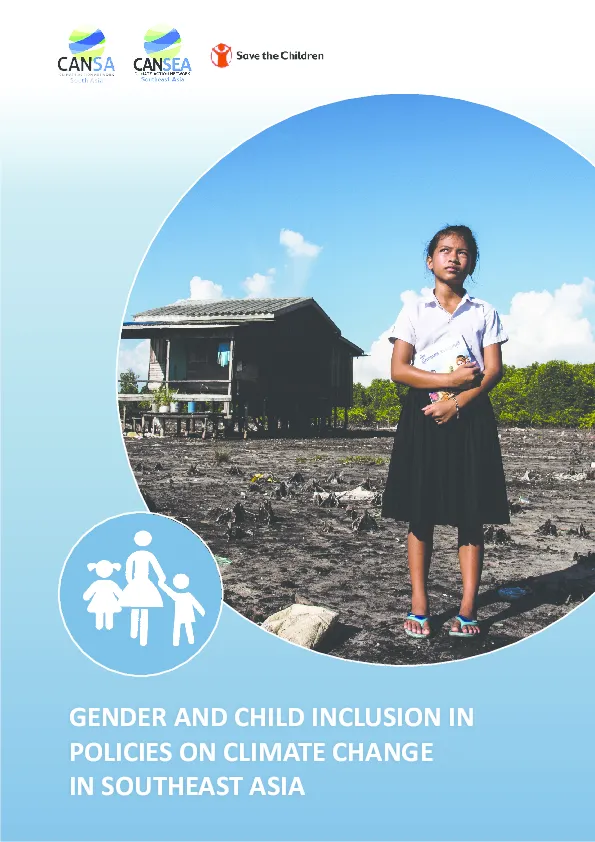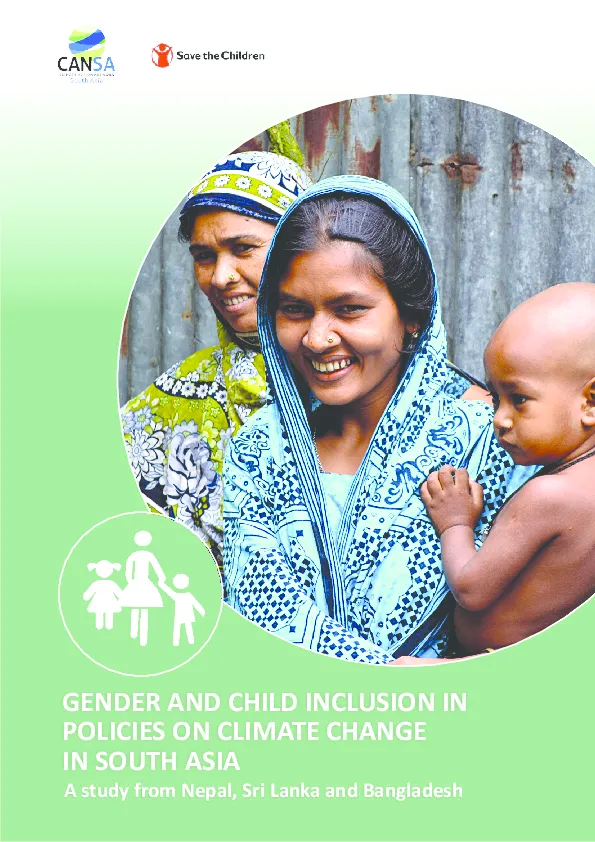
Reports
Gender and Child Inclusion in Policies on Climate Change in Southeast Asia
Publication year:
2022
English
Format:
PDF (7.4 MiB)
Publisher:
CANSA, Climate Action Network South Asia,CANSEA, Climate Action Network Southeast Asia,Save the Children
While Southeast Asia remains one of the most vulnerable regions to impacts of climate change, it also experienced the largest increase in emissions globally between 1990 and 2010. This trend has emerged alongside the region’s socio-economic development and move towards industrialisation. As a result of structural barriers and cultural norms in Southeast Asia Asia, women and children experience disproportionate impacts of climate change. These barriers hinder access for these vulnerable groups to rights, resources, and representation in climate action.
This report provides a situational analysis on climate action relating to women and children in Southeast Asia. Existing Association of Southeast Asian Nations (ASEAN) climate policies, on a regional level, are generally gender-responsive, framed within a broader framework of sustainable development, with a positive trend towards gender-transformative action. While Nationally Determined Contributions amongst ASEAN countries have broadly adopted gender-responsive approaches, some countries have taken more significant steps in gender-transformative action, while others lag behind and are gender-blind.
Read full abstract
Authors
View & Download
Document information
Publisher
Authors
Format
Content type
Region
Rights
© Author/Publisher
Keywords
Found a mistake? Help us improve!
If you have noticed a document assigned to the wrong author or any other inaccuracies, let us know! Your feedback helps us keep our data accurate and useful for everyone.
Share
Link

